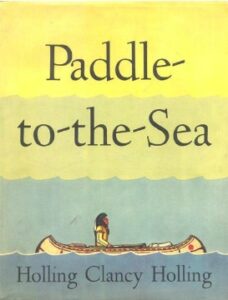 When I began teaching elementary-aged children in the early seventies, a favorite read-aloud book (later a film) was Paddle-to-the-Sea, by Holling Clancy Holling. It chronicles the journey of a toy wooden canoe inscribed with “Please put me back in the water” as it travels from deep within Canada and eventually makes its way to the Atlantic Ocean. All with the help of human intervention that honored its inscription.
When I began teaching elementary-aged children in the early seventies, a favorite read-aloud book (later a film) was Paddle-to-the-Sea, by Holling Clancy Holling. It chronicles the journey of a toy wooden canoe inscribed with “Please put me back in the water” as it travels from deep within Canada and eventually makes its way to the Atlantic Ocean. All with the help of human intervention that honored its inscription.
We recently had a wonderful 5-day camping adventure that included paddling our kayaks “to the sea.” Waxmyrtle Campground is in Oregon’s Siuslaw National Forest and our campsite provided us a launch point on the Siltcoos River to paddle both up and down the calm water. A variety of wildlife sightings entertained us both in camp, at the nearby Lagoon Campground, and while in our boats. On our second day we pointed our fiberglass kayaks west to explore the mouth of the Siltcoos. Thankfully the water was like paddling on a lake and we went as far as we could given the conditions.
We began our journey at low tide, and covered the ½ mile without effort. As we approached the surf the going became more difficult because of a surprisingly strong current and extremely shallow water. We planned to return the next day—postponing our departure by an hour after the lowest tide.
That was the trick and the combination of sufficient depth and a negligible current allowed us to easily reach the Pacific. I beached my kayak to watch cormorants, pelicans, and gulls compete for food delivered by the incoming tide. Within moments, however, the rising water gently lifted my bow off the sand, slowly spun me around, and Sooney and I proceeded to ride the current back to camp. The journey up the river was lazy, contemplative, and the overcast conditions lifted to bathe us in glorious sunlight backlighting enormous trees along the shore. It was an interesting coincidence how Sooney’s paddle rhythm coincided with that of the movement from Mozart’s Violin Concerto I used to score the following 6½ minute video.

